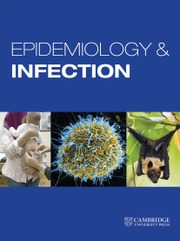Article contents
The production of Clostridium botulinum toxin in mammalian, avian and piscine carrion
Published online by Cambridge University Press: 15 May 2009
Summary
Mice, birds (chicks, quail) and fish (rudd, goldfish) killed shortly after receiving 1300–2000 spores of Clostridium botulinum per os were incubated, usually at 23 °C for 7 days. A 10% (w/v) homogenate of each rotting carcass was then prepared, sterilized by membrane filtration, and assayed for toxin.
In mouse carcasses a type C strain of C. botulinum usually produced > 2 × 105 mouse intraperitoneal LD/g; in fish carcasses it usually produced less - often much less - than 2 × 104 LD/g. Avian carcasses appeared to be intermediate between those of mice and fish in their ability to support toxigenesis. A type E strain of C. botulinum, unlike type C. produced toxin equally well in fish and mouse carrion, usually at a concentration of between 2 × 104 and 2 × 105 LD/g.
- Type
- Special Article
- Information
- Copyright
- Copyright © Cambridge University Press 1989
References
REFERENCES
- 4
- Cited by


